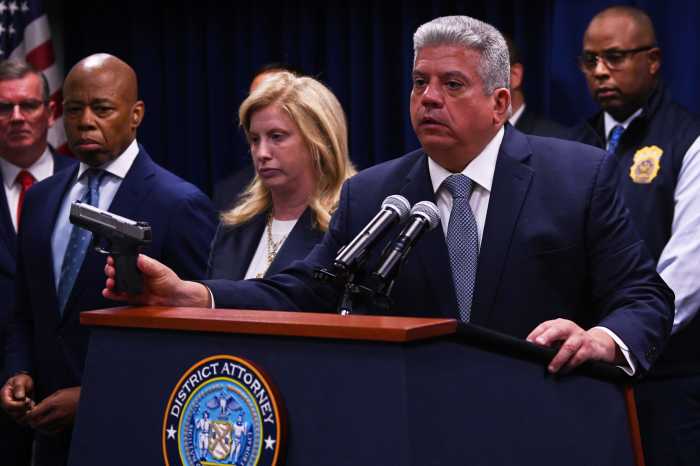By Greater Astoria Historical Society
In conjunction with the Greater Astoria Historical Society, TimesLedger Newspapers presents noteworthy events in the borough’s history.
In January 1951, as part of domestic moves to defend the country, it was announced that for the first time since World War II, 2,000 regular Army anti-aircraft troops would start guarding Queens and New York City from Fort Totten in Bayside and Fort Tilden in the Rockaways. The decision was part of a series of moves by which the military and civil defense of the metropolitan area would be coordinated. In December, the Air Force had announced that fighter groups stationed around the city were operating on a 24-hour alert, both for training and for guarding against a surprise attack.
On Jan. 2, 1951, two patient bandits, one roughly fitting the description of master bank robber Willie Sutton, held up the Woodside Savings and Loan Association at 39-46 61st St. and escaped with $19,400. The robbery followed a pattern similar to a robbery in March 1950, at the Manufacturers Trust Company branch in Sunnyside, which netted a cool $64,000 (authorities called this heist Willie’s Masterpiece).
One of Sutton’s trademarks was the use of disguises. He had used complete disguises as a postman, Western Union messenger and many more, either to “case” his jobs or to execute them to perfection. There was speculation that Sutton might be using the disguise of a policeman to elude capture. As one detective put it, “They don’t call him Willie ‘the Actor’ for nothing.”
The Long Island Rail Road had emerged with the dubious honor as the disaster champion of 1950. Two train wrecks, one, killing 33, on Feb. 17 in Rockville Center, and a second, killing 79 and injuring more than 400, the day before Thanksgiving in Richmond Hill placed the railroad at the top of the Metropolitan Life Insurance Company’s annual list. The line was operating in bankruptcy, and many claimed that its operations were a danger to passengers and that it wasn’t adequately preparing for its role in evacuations caused by bombing attacks.
The second largest of 600 to 700 damage suits relating to the LIRR wrecks was filed in Brooklyn Federal Court on Jan. 12, 1951. In the suit, Mrs. George Robert Cohen sought $1 million in compensation for her husband’s death in the Thanksgiving Eve disaster in Richmond Hill. Her husband was traveling home to Merrick, with a $150,000 settlement of a suit relating to the earlier Rockville Center wreck in his pocket, when the Babylon express on which he was riding crashed into a Hempstead local.
After a trial of several months in Manhattan, it was announced that one-side-of-the-street parking — now known as alternate-side parking — would be introduced in Flushing in March.
Judge William B. Groat Jr. denounced the Long Island City courthouse as “unsanitary, an archaic remnant, unsafe and a firetrap.” The courthouse’s rather lavish exterior belied the fact that the interior was so badly appointed that Groat said he would hesitate to expose juries to dangerous health and fire conditions found in jury rooms. A $250,000 facelift was proposed.
On Jan. 28, Queens’s oldest resident, Krikor Arabian of Sunnyside, died at age 118. Interviewed by the Star on his 112th birthday, Arabian attributed his long life to “taking it easy.” At the time, he was in fine health and took brisk morning walks. His pet aversion was “jive dancing.” He took a serious view of modern dancing. “Anything that fast is ruinous,” he said. Arabian was born in Armenia and did not move to the United States until 1910. He had only one regret. He never became an American citizen.
For further information, contact the Society at 718-278-0700 or visit our website at www.astor



































